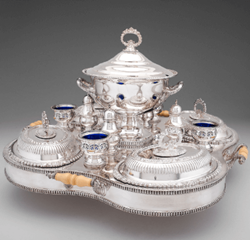A variety of adverse consequences can occur when the plating on the hanger is too thick. The major ones are the following.
(1) Imprints on the plated parts
When the plated member and the hook are in contact with each other, the thickness of the plated member is increased due to the thickening of the hook, which may affect the normal deposition of the piling layer.
(2) hooks are easily broken
When the plating on the hanger is too thick, it is inevitable that there will be uneven thickness of the coating. In particular, the contact point of the workpiece directly connected to the hook will be very thin, and the plating around it will be very thick. At this time, a little force is applied at this position. It will break and the attached work piece will fall and fall, causing quality accidents.
(3) Increase production costs
With the thickening of the coating on the hanger, the surface area thereof increases accordingly, the metal on the sink increases, and the solution brought out with the hanger (workpiece) increases, and the consumption of energy increases.
(4) The plating solutions are contaminated with each other.
The plating on the hanger is too thick, the surface roughness of the coating is increased, and the cleaning quality is reduced. The solution adsorbed on the surface of the rack is difficult to clean, which may cause contamination between the plating solutions. When the plating on the hanger is removed, the plating may be performed in the same manner as the plating removal on the plating.
The thick chromium layer on the chrome plated hanger is often thicker and it takes a long time to retreat. At this time, the brittle nature of the chrome plating can be used to remove the chromium layer on the boring head. The plating on the nipper plate will fall off on its own.
Plating on galvanized, cadmium-plated, tin-plated, and black-nickel-plated platings should be used once and for a time, so as not to contaminate other plating baths during pretreatment.
The nickel layer on the steel rack can be removed by the following process.
Nitric acid (HNO3) 1000mL/L
Sodium chloride (NaCl) 30~50g/L
Temperature 40~60°C
The inadequacies of this process are that nitrogen oxides are generated, work under good exhaust conditions, and the removal of the liquid must be prevented by water in order to avoid corrosion.
When the nickel-removing layer is contained in a process formulation containing sodium cyanide and sodium metanitrosulphonate, it can be performed at room temperature to avoid rapid decomposition of sodium cyanide and ammonia solution.
The noble metal-containing solution withdrawn on the noble metal-plated rack should be properly kept for recycling when necessary.
The hangers used for anodizing of aluminum must be used once for film removal, otherwise they will no longer be conductive. The film can be removed in an acidic solution or in an alkaline solution. When the film is removed from the acid film, the substrate is no longer corroded after the film is removed. This can extend the service life of the rack. However, the process is cumbersome, requires a higher liquid temperature, and the film removal speed is also relatively slow. In addition to the two kinds of film stripping treatments that can be used, it is also possible to use a guillotine knife to cut the contact area with the workpiece, and the oxide film is removed. Can be used afterwards; (Although oxide film is not allowed in contact with the workpiece). Some racks use this membrane removal method to greatly increase the service life of the rack.





